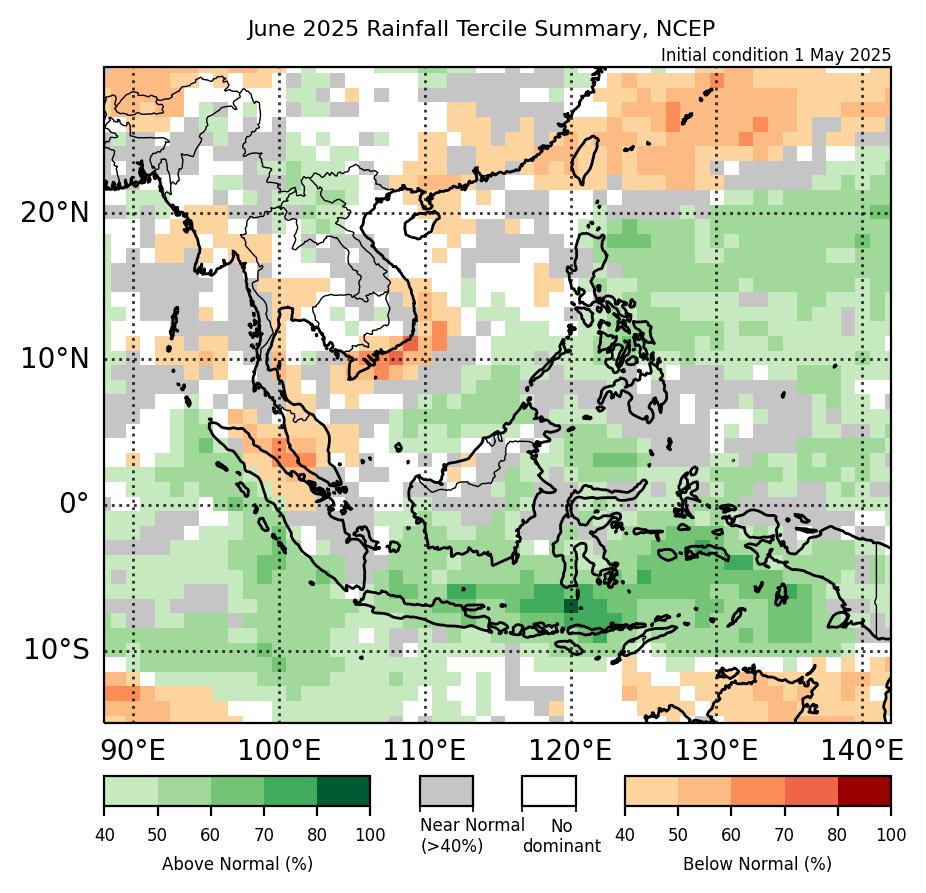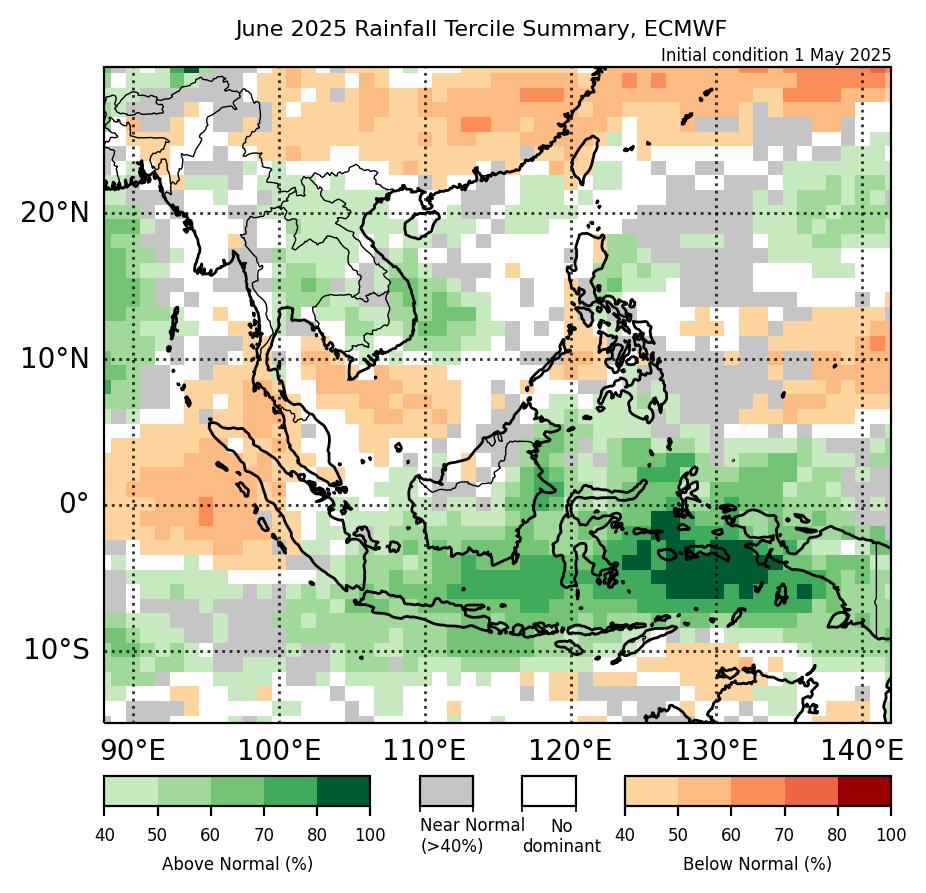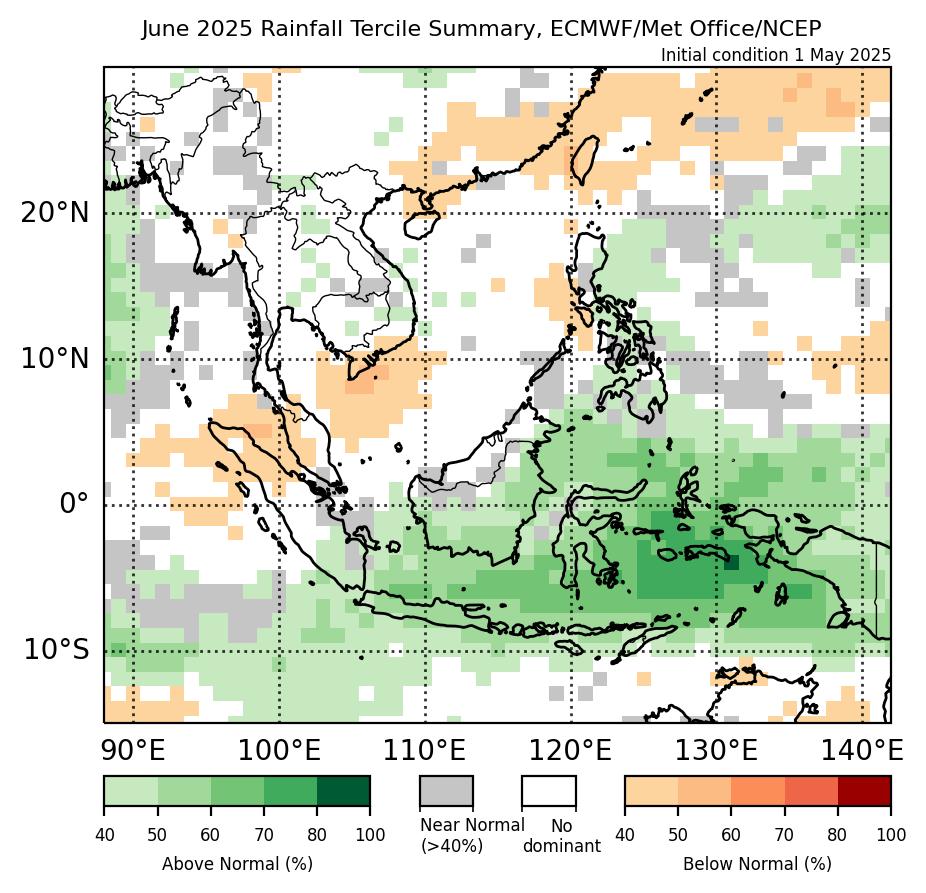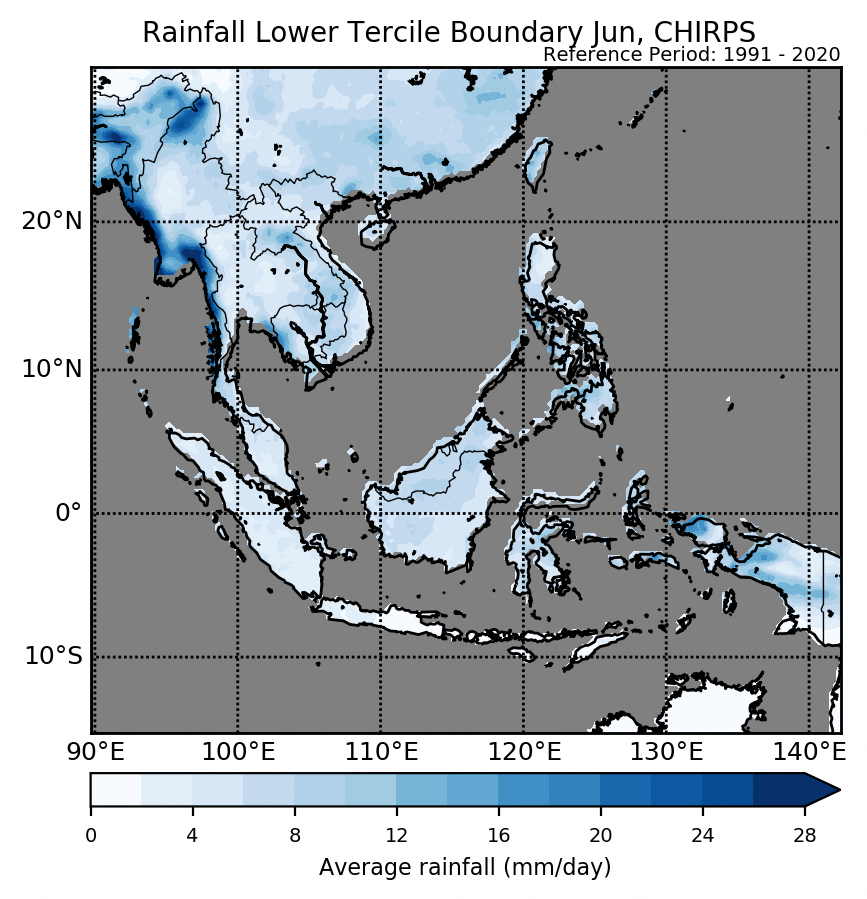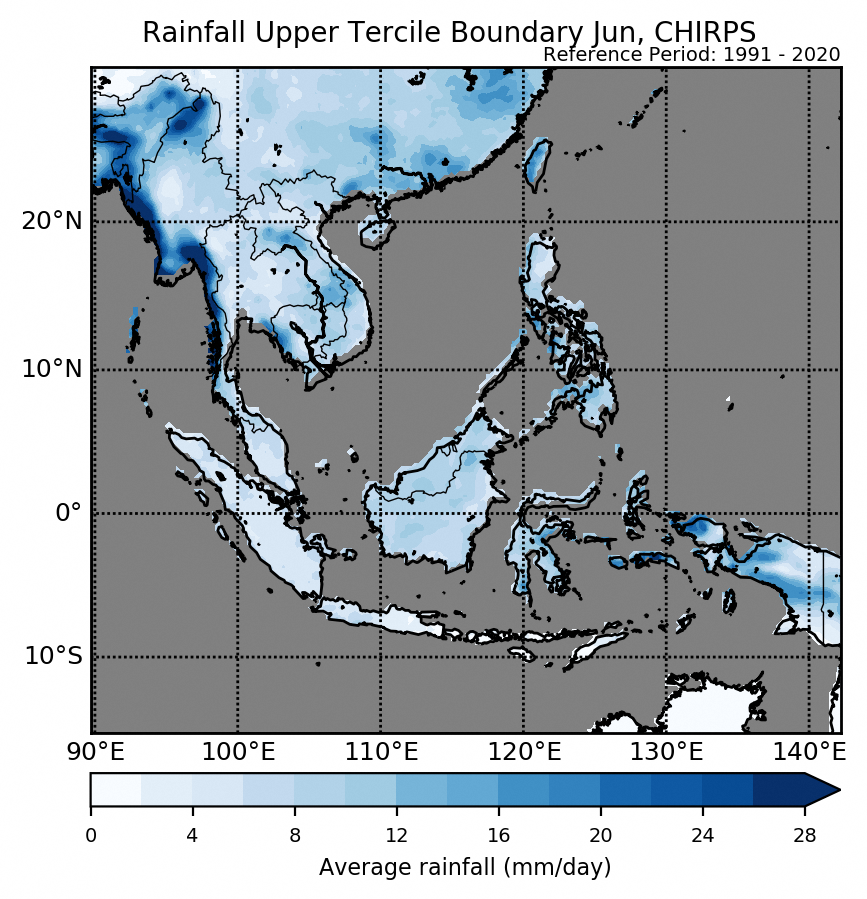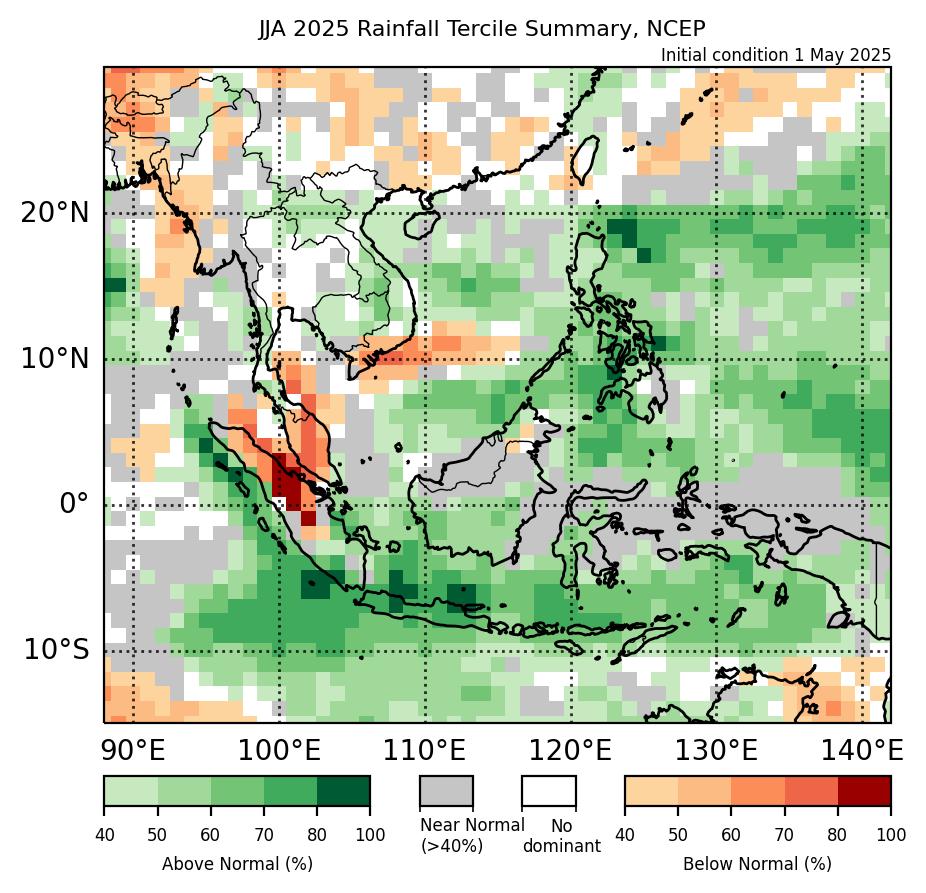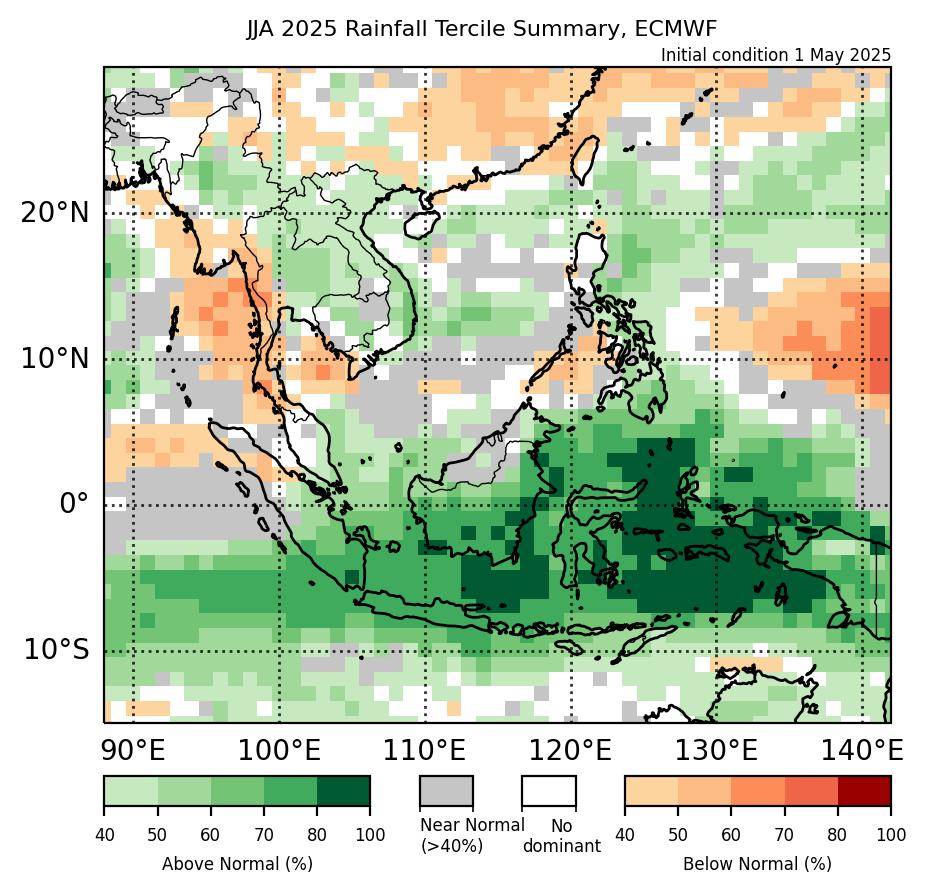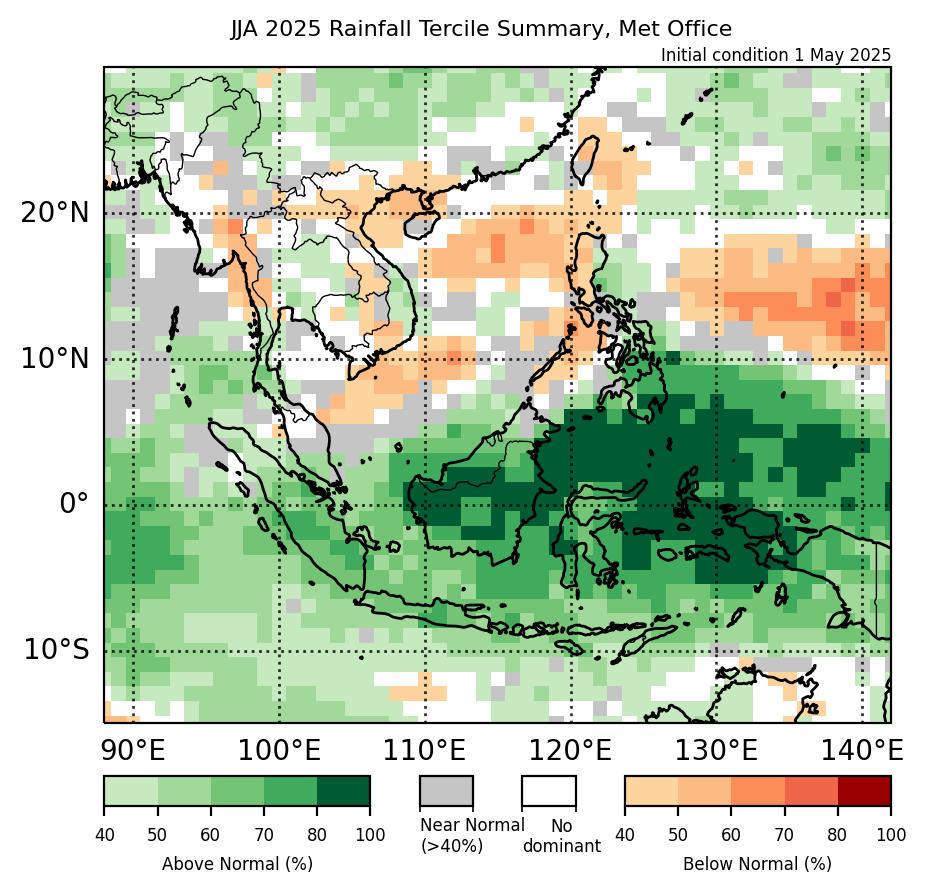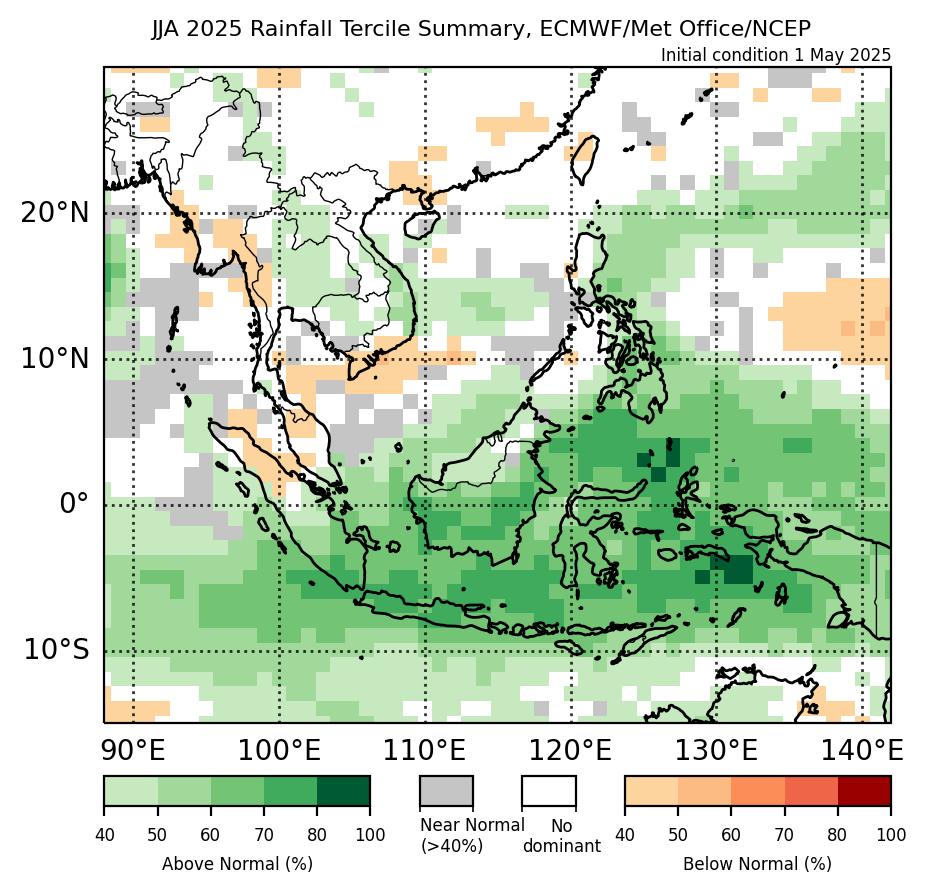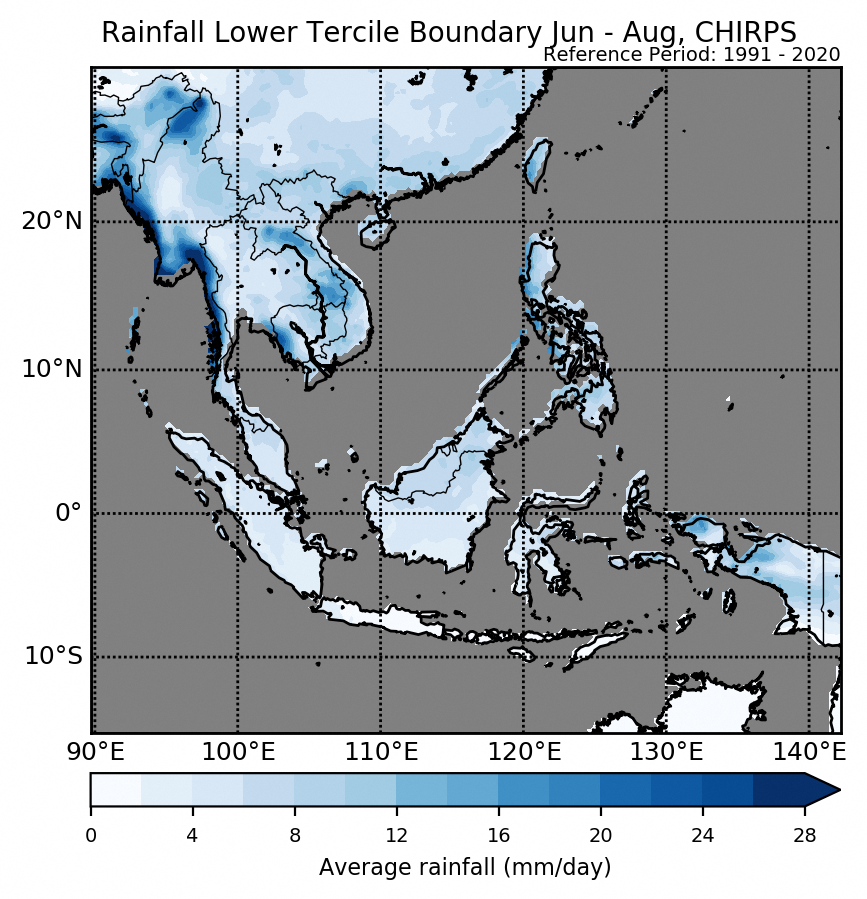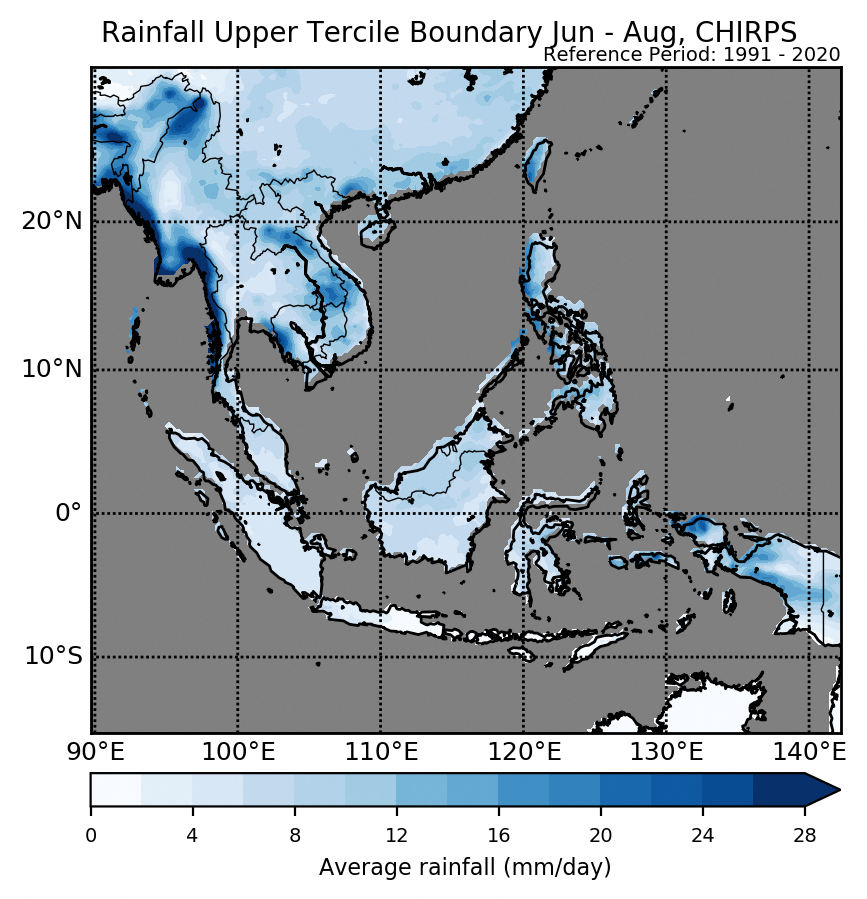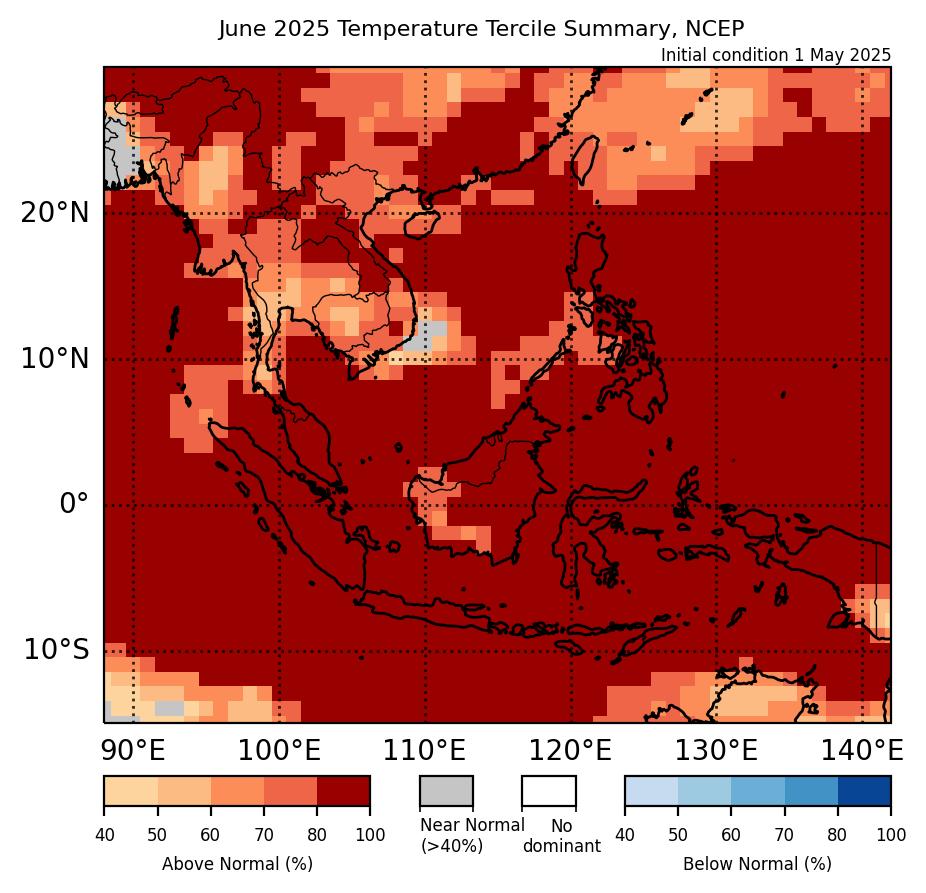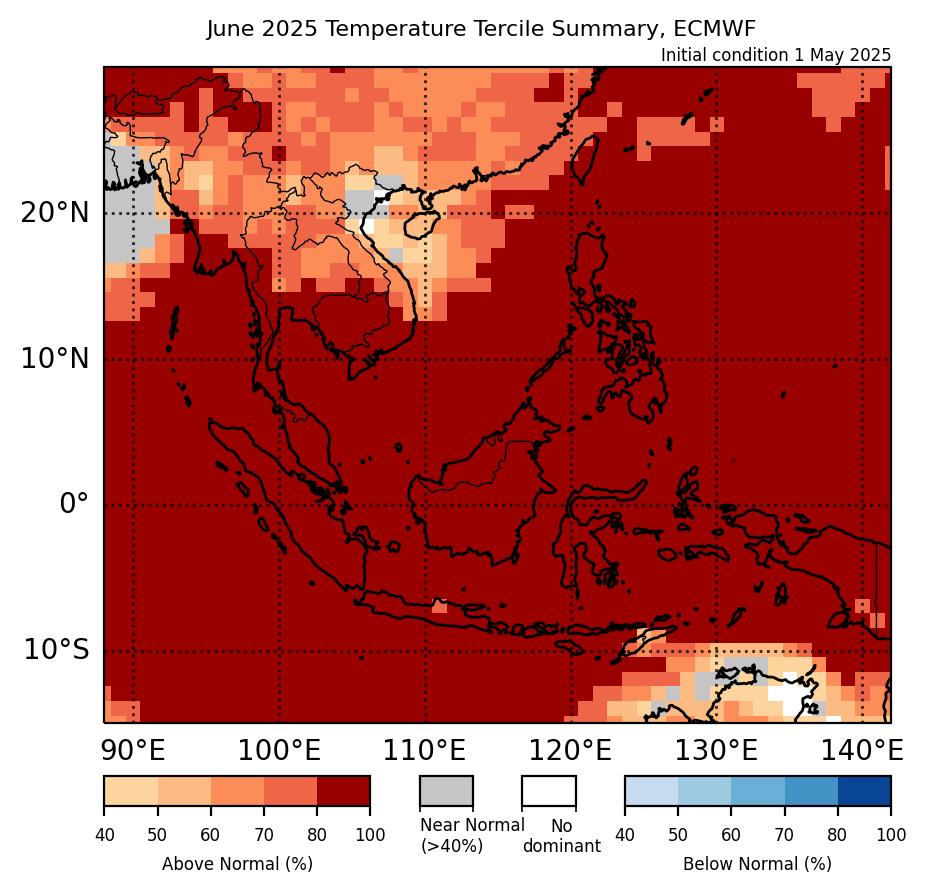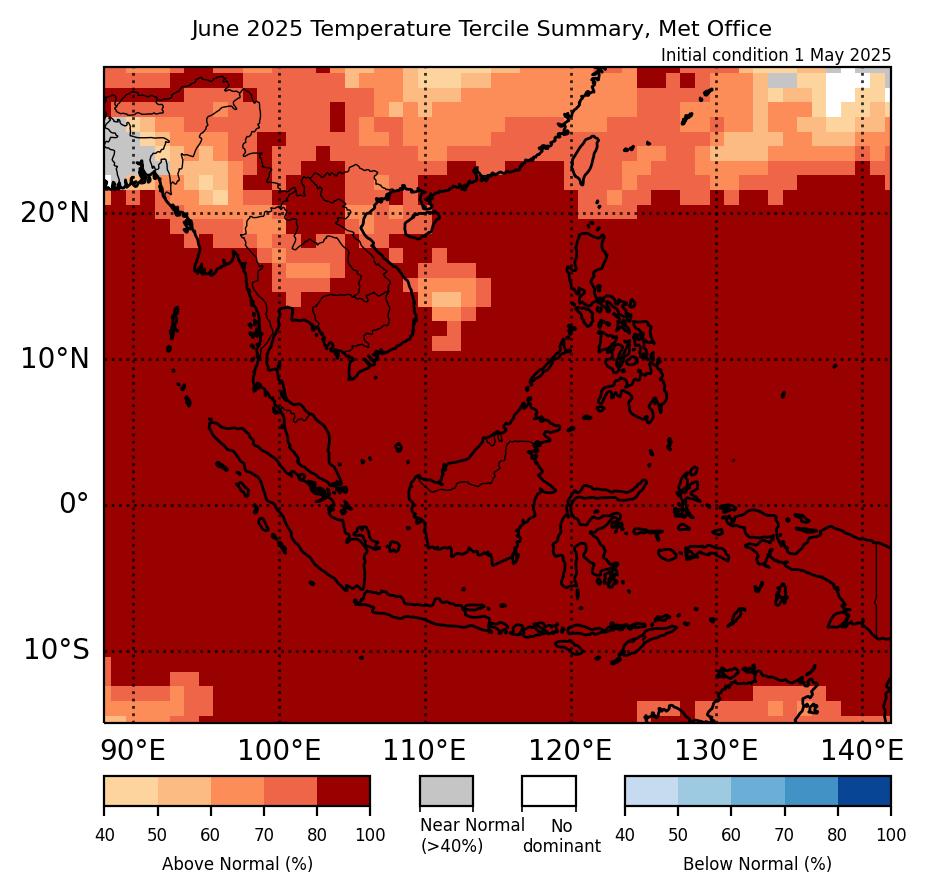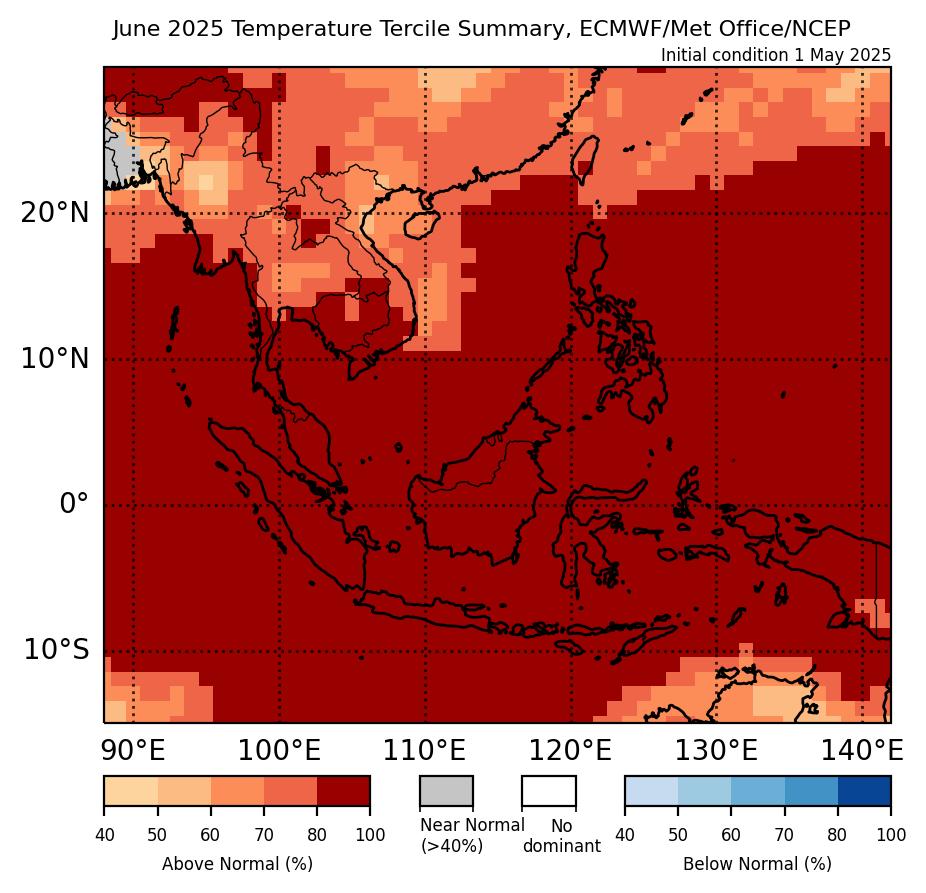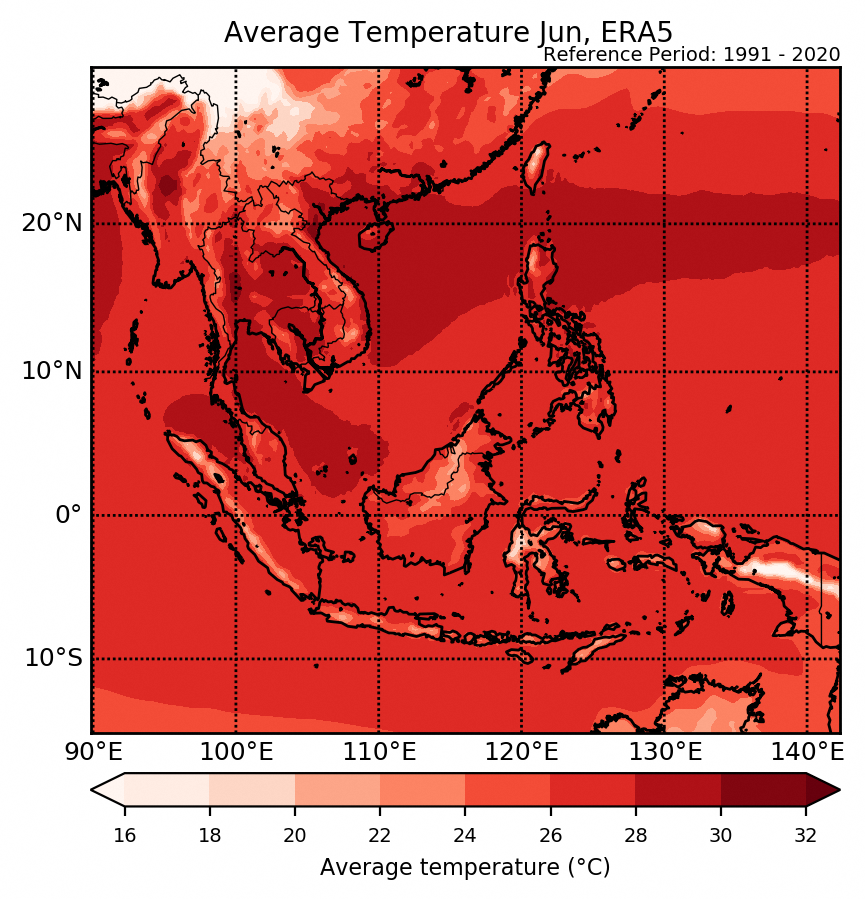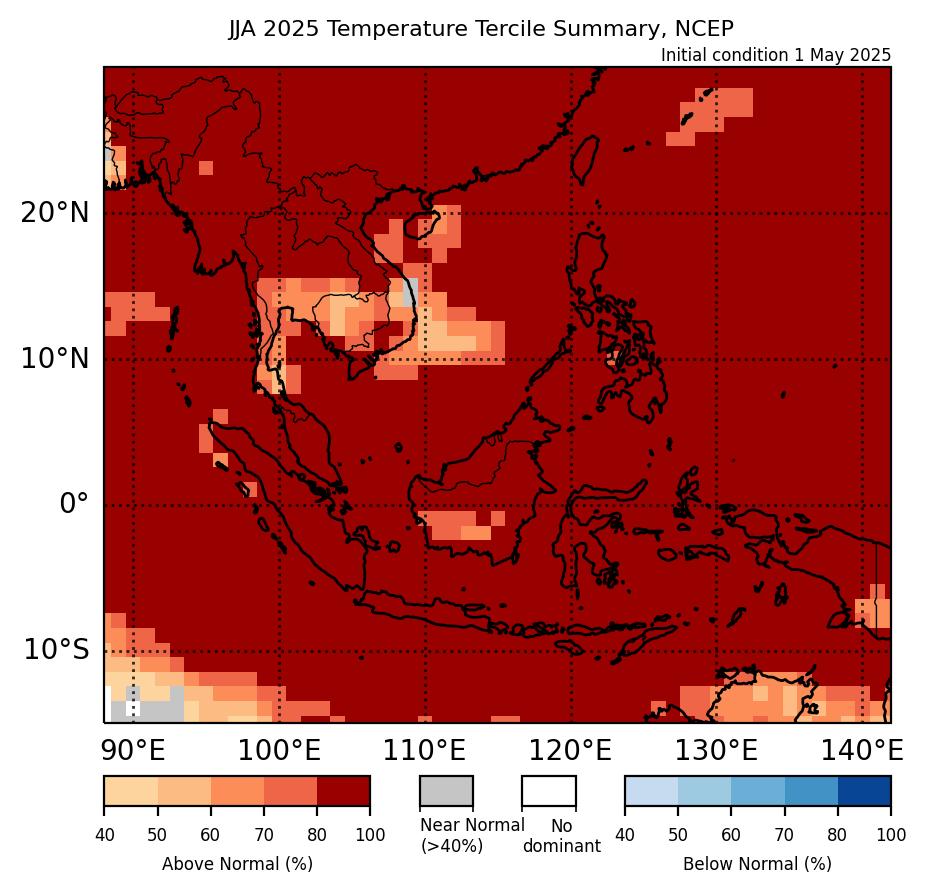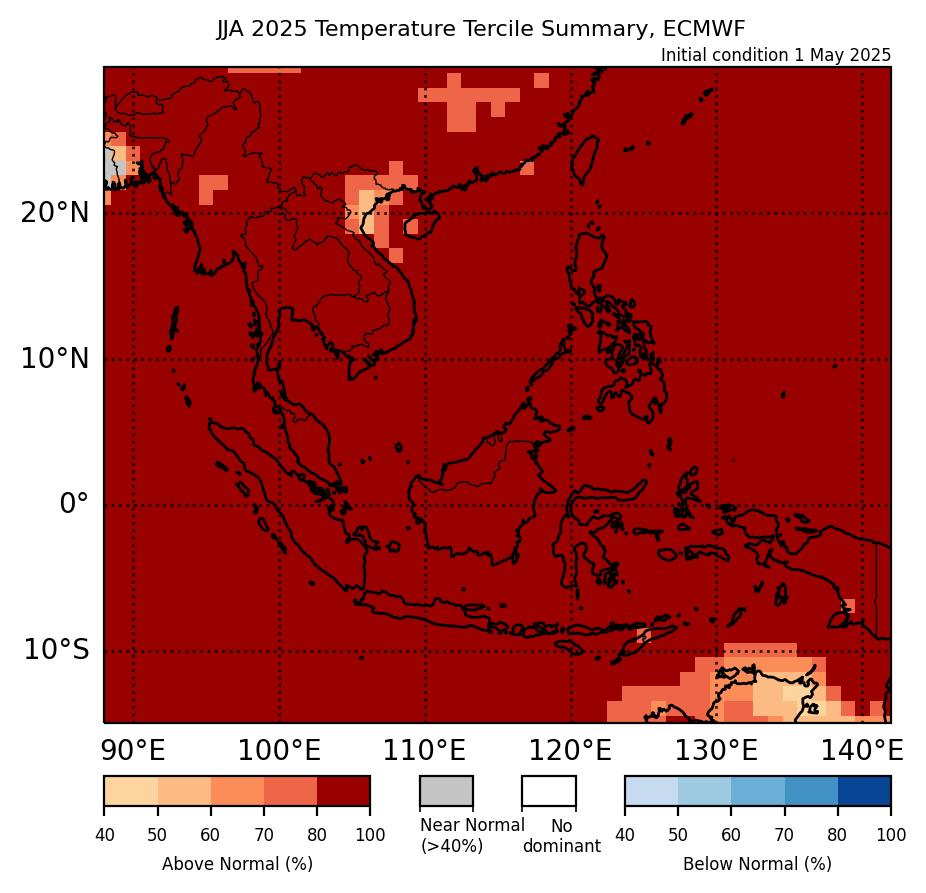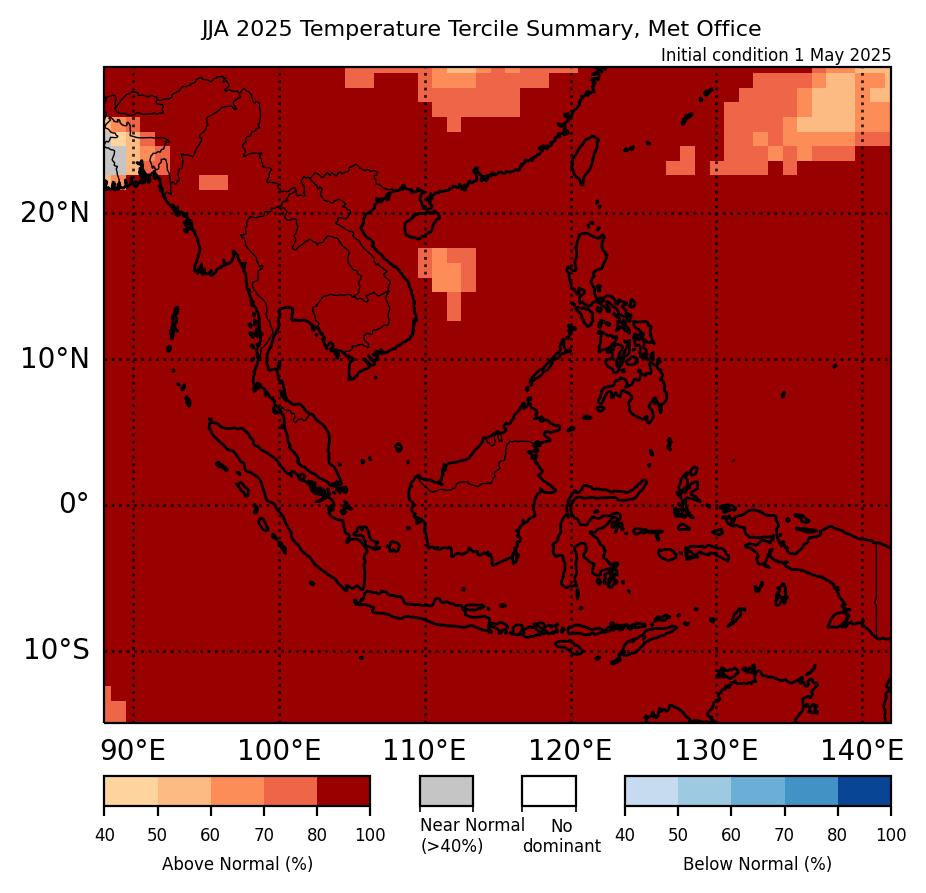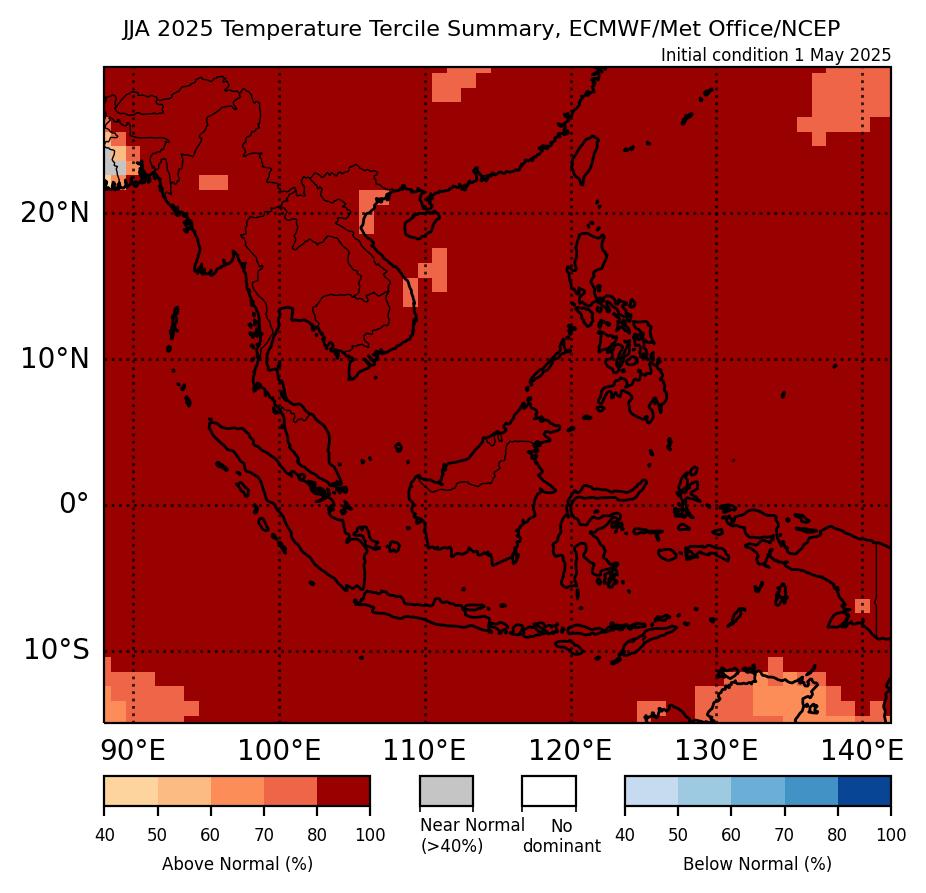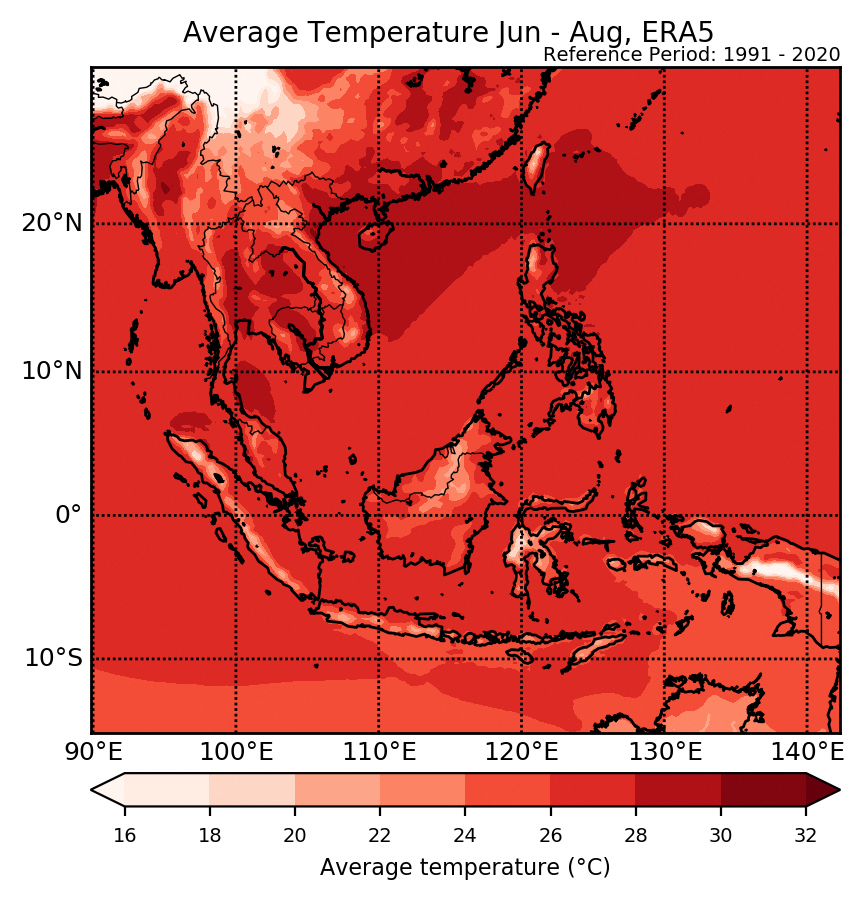Frequently Asked Questions
What is a seasonal forecast?
A seasonal forecast provides forecast information about the general weather conditions at seasonal timescales up to several months ahead. Long range predictions rely on predicting components of the atmosphere and the oceans which show variations at large spatial and temporal scales. Among these key components is the sea-surface temperature – an important indicator in the El Niño Southern Oscillation (ENSO) cycle.

Example of probabilistic long range forecast using the multi-model ensemble. For areas nearby Peninsular Malaysia, the forecast is showing a probability of 50-70% of rainfall being in the below-normal (33%) tercile range. (Source: WMO LC LRF)
To account for the chaotic nature of the atmosphere, seasonal forecast adopts a probabilistic approach and the forecast weather condition is presented as an average over an extended period of time, usually with reference to climatology.
ASMC carries out monthly seasonal forecast predictions based on various seasonal model forecasts from the leading meteorological centres, supplemented by individual assessments from respective countries in South East Asia. The skillfulness of seasonal forecast relies greatly on the performance of seasonal models, which differ from one place to another and for different seasons of the year.

Receiver operating characteristic (ROC) score of UK GloSea5 seasonal hindcast for above-normal precipitation scenario for Dec – Feb (left) and May – Jul (right) over Asia region. Higher ROC score (indicated in red) means better model skill. (Source: UK Met Office)
For example, one way to assess the seasonal model skills is to examine the ROC score. From the figures above, we can see that ROC score map differs greatly from one season to another. During the period from Dec to Feb, a high ROC score region is observed mainly over the Philippines whereas during the period from May to Jul, a high ROC score region is observed over the near equatorial region such as Peninsular Malaysia and Sumatra.


